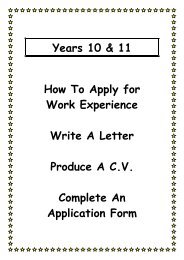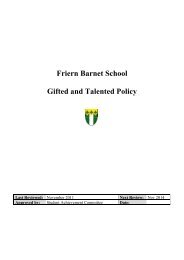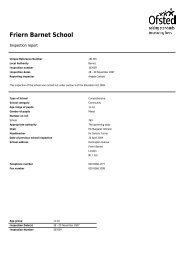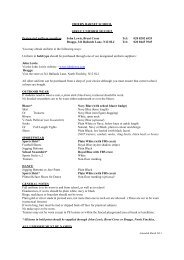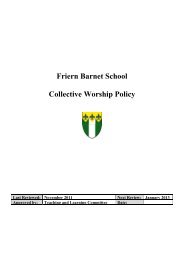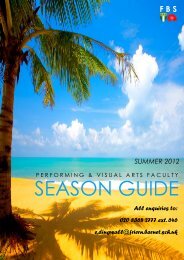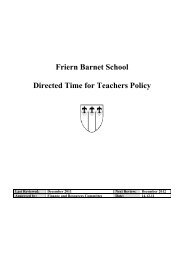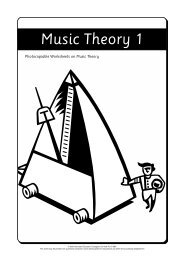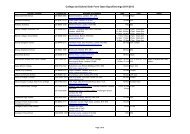VOL 166 Music Theory 2 - Friern Barnet School
VOL 166 Music Theory 2 - Friern Barnet School
VOL 166 Music Theory 2 - Friern Barnet School
Create successful ePaper yourself
Turn your PDF publications into a flip-book with our unique Google optimized e-Paper software.
Name: ____________________ <strong>Music</strong> <strong>Theory</strong> 2 Worksheet<br />
346<br />
TENOR CLEF<br />
The tenor clef is centred around the 4th line of the stave. This 4th line tells the performer<br />
where the note middle C is found in this clef. Another name for the tenor clef is the C clef.<br />
middle C<br />
The most common instruments that<br />
use the tenor clef are the cello,<br />
bassoon and trombone.<br />
As with alto clef, using the tenor clef helps to avoid<br />
having to use too many leger lines. This would<br />
happen when writing for instruments that have a<br />
range from the bass clef up to the lower end of<br />
the treble clef and so the tenor clef is used instead.<br />
1w444w<br />
:A<br />
Cello range<br />
You can see from the diagram that<br />
the range of the cello extends from<br />
the C two octaves below middle C<br />
right up to top G in the treble stave.<br />
This makes the tenor clef convenient<br />
to use as the most usual notes played<br />
falls in the middle of this range.<br />
3yuiop[]4as<br />
w<br />
3pyi[\uoa]s<br />
D E F G A B C D E F<br />
Write down the names of the notes below.<br />
44444<br />
Practise drawing the tenor clef on<br />
the empty stave.<br />
`444444444444444<br />
Now rewrite these notes in treble clef at pitch. Watch out for the leger lines!<br />
www.keynoteseducation.com © 2004 Keynotes Education Crossgate Cornwall PL15 9SX<br />
This sheet may be printed from a personal computer and/or photocopied for educational use within the purchasing establishment<br />
2




